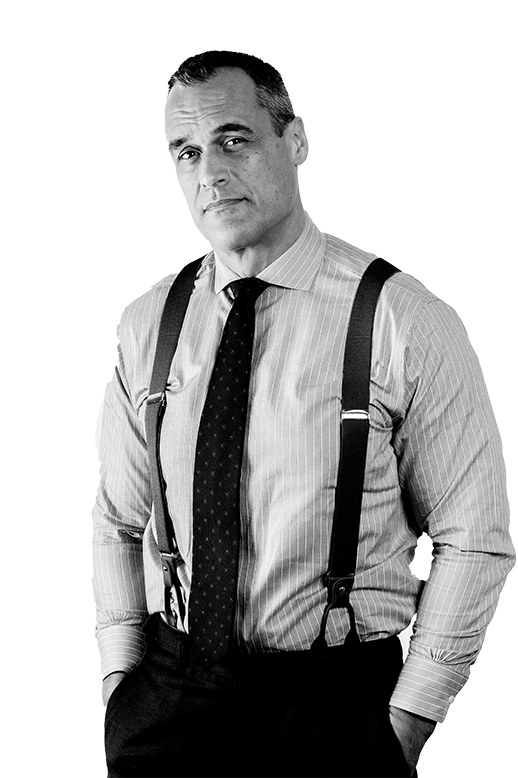Dan Gardner is the New York Times best-selling author of Risk, Future Babble, Superforecasting (co-authored with Philip E. Tetlock), and How Big Things Get Done (co-authored with Bent Flyvbjerg). His books have been published in 26 countries and 20 languages. Prior to becoming an author, Gardner was an award-winning investigative journalist. More >
The Dutch Way
Much of the commentary about Europe's current troubles with immigration rests on a foundation of assumptions. One is the belief that the countries of Western Europe were, until recently, monocultural. Another is that multiculturalism -- a vague term rarely defined by those who use it most scornfully -- is an ideology with its origins in 1960s-era leftist politics.
The reality varies from country to country, but in general it is safe to say that both assumptions are wrong. Nowhere is that more true than in Holland.
"Holland has always been a country where at least three cultures of Europe came together," says Geert Mak, a popular Dutch historian. "The southern part is the French culture. The Atlantic part is Great Britain and later America. And there's also the Scandinavian part in the north. We are really a mixture."
As we chat in the sunshine of a late-summer day, the proof of Mr. Mak's point lies all around us. We are in Friesland, the northernmost province of the Netherlands, where Mr. Mak has a summer home near the tiny village of Jorwerd, the now-famous subject of his first best-seller. To foreign eyes, Friesland is an endless sequence of quaint farmhouses, windmills, swans paddling in canals and flat green fields stretching off to a distant horizon: the perfect Dutch postcard.
And yet, in a sense, Friesland isn't Dutch. It is an ancient land with a people, history and identity quite different from those in the provinces to the south. It even has its own language. Children here learn Dutch as they do English -- from school and television.
Divided by culture and language, the Dutch have also been separated for centuries by faith.
The Protestant Reformation brought Calvinism to the Netherlands and left the country close to evenly divided between Protestants and Catholics. Elsewhere in Europe, this division meant endless civil war. Not so in Holland. Instead, Dutch Calvinists and Catholics came to an understanding: Each side knew God would ultimately cast the other into the fiery torments of hell -- just what the infidels deserve -- but in this life, people should go about their business.
And business, more than any other factor, is the key to understanding why the Dutch chose peaceful co-existence over the endless hate, murder and war that prevailed elsewhere on the continent during the 16th century.
"It was not because we were such nice people," laughs Mr. Mak. "It was a country very oriented to business. And when some guy from the Ottoman empire comes and wants to trade, you cannot put him on the stake because he is a Muslim. It's very bad for business."
Thanks to this tradition of pragmatic tolerance, Amsterdam became a haven for persecuted intellectuals and despised minorities. It is no accident that Amsterdam is where Baruch Spinoza -- the son of Jewish refugees from Spain -- fashioned some of the earliest and most influential arguments in support of tolerance and diversity.
In the 19th century, as modern institutions evolved, Dutch society created what came to be called "pillars" -- institutions organized along confessional lines. Catholics had their own churches, hospitals, political parties, schools, trade unions, newspapers and, later, radio stations. Protestants had a pillar, too. Socialists developed a secular pillar.
Dutch politics consisted of leaders from each pillar meeting and negotiating a consensus on national policies.
This system of living apart-but-together functioned well until the 1960s, when a drift away from religion eroded the authority of the churches. A broad movement, supported mainly by the left, sought to erase the pillars and replace them with non-denominational public institutions.
They succeeded. Today there are remnants of the old pillars but the system is all but gone.
Pillarization had at least one lasting effect, however. In the 1980s, as Muslim numbers grew, many officials concluded that the obvious thing to do was add a Muslim pillar. So there would be Muslim schools, Muslim parties, and so on. Few worried that this would isolate Muslims and impede integration. This was the traditional Dutch way of handling difference, after all.
Today, there is widespread agreement in the Netherlands that this was a mistake and that Muslim immigrants need to be integrated to the greatest possible extent into public institutions. But to blame that mistake -- as many pundits do -- on leftist, 1960s-era multicultural thinking is to ignore Dutch tradition and the centuries of success the Dutch had in coping with a multicultural society.
